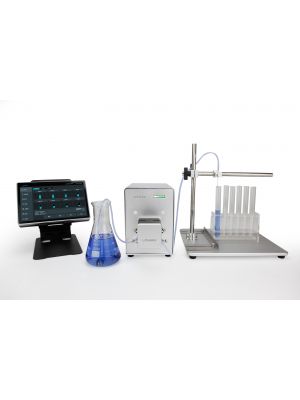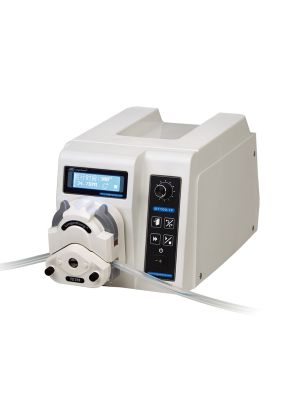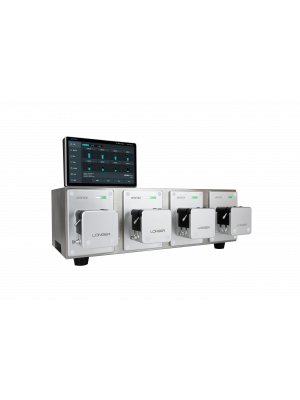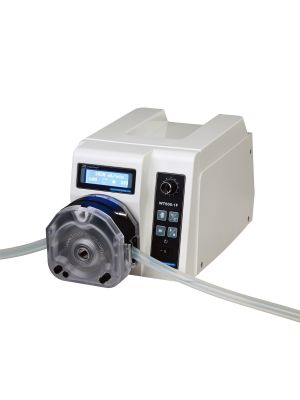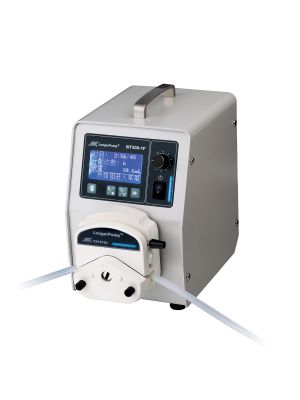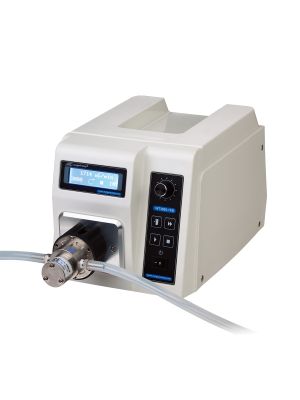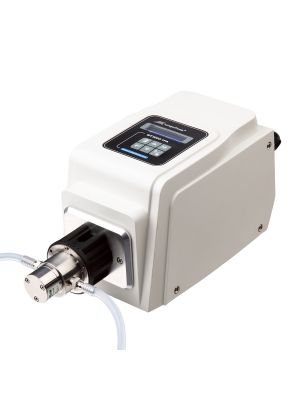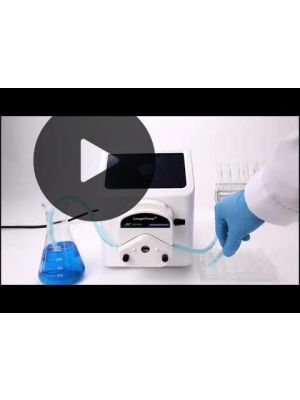
Dispensing pumps for laboratories & R&D
Precise dosing pumps in laboratories and the pharmaceutical industry are of crucial importance for exact and reproducible liquid dosing. Two prominent examples of such dosing pumps are peristaltic pumps and gear pumps, which impress with their specific properties and areas of application.
- Micro-volume Peristaltic Pump Filling System - Dispensing System SKU:
dPOFLEX-PFUSpecial Price $ 4,681.65 Regular Price $ 6,242.20 Discount 25% - Precise dosing peristaltic pump 0.2 µl/min-500 ml/min SKU:
BT100-1FSpecial Price $ 952.61 Regular Price $ 1,058.46 Discount 10% - dPOFLEX Industrial peristaltic pump for pharmaceutical and biotechnology IP66 SKU:
dPOFLEXSpecial Price $ 4,867.50 Regular Price $ 6,490.00 Discount 25% - 4- Peristaltic Pumps Micro-volume Filling System - Dispensing System SKU:
dPOFLEX-PFSSpecial Price $ 18,930.15 Regular Price $ 21,033.50 Discount 10% - Dispensing peristaltic pump 0.7 ml/min to 6000 ml/min and 2 pump heads SKU:
WT600-1FSpecial Price $ 2,076.21 Regular Price $ 2,306.90 Discount 10% - Precise dosing peristaltic pump 0.07 ml/min-1500 ml/min SKU:
BT300-1FSpecial Price $ 1,715.93 Regular Price $ 1,906.59 Discount 10% - Micro Gear Pump - batch dispensing and filling - up to 14 bar SKU:
WT3000-1FBSpecial Price $ 1,880.80 Regular Price $ 2,089.78 Discount 10% - Compact Micro Gear Pump - batch dispensing and filling - up to 8 bar SKU:
WT3000-1FASpecial Price $ 1,465.56 Regular Price $ 1,628.40 Discount 10% - Precise laboratory peristaltic pump 0,15 µl/min–500 ml/min - Many functions, large display SKU:
LX00-1F$ 2,076.21
Peristaltic pumps, also known as hose pumps, are characterized by their gentle and contamination-free pumping of liquids. Their principle of operation is based on the use of a flexible hose that contracts and relaxes. This creates a pressure wave that moves the liquid through the hose. These pumps are particularly suitable for sensitive liquids and aggressive substances, as the liquid only comes into contact with the hose. They also offer high precision at low to medium flow rates and are easy to clean and maintain. In order to avoid contamination, the hoses of this pump system can be easily exchanged.
Gear pumps, on the other hand, work on the principle of meshing gears that move the liquid through the pump chamber. They are suitable for higher pressures and applications where low pulsation is important. Their precise construction enables accurate dosing, especially when dealing with liquids with a viscous consistency. Gear pumps can overcome high pressure differences and are therefore versatile.
Both pump types offer precise control options to regulate the dosage to the point. This is of critical importance in pharmaceutical research and manufacturing, where even the slightest variation in dosage can affect a product's quality, efficacy and safety. The pumps can often be linked to automated systems to closely monitor and control dosages, ensuring reproducibility of experiments and production processes.

